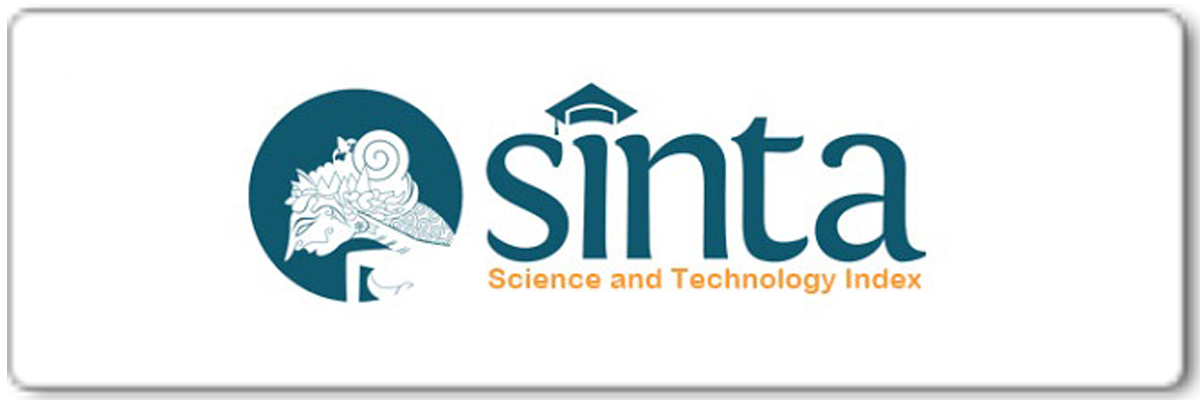AN ANALYSIS OF COHESION IN TEXTS MADE BY ELT 7TH STUDENTS OF IKIP PGRI MADIUN: A DISCOURSE ANALYSIS
Abstract
The purpose of this research is to identify the cohesive devices and thematic progression which are constructed in texts made by ELT 7th Students of IKIP PGRI Madiun on Final Project of Psycholinguistic Class. This research is conducted by using Discourse Analysis and qualitative research approach. The type of this research is library research, using document as object. The technique of analysing data is Flow Model. This result of this research are: (1) The researcher finds that the cohesive devices which the most frequently used in all data is Reference with the total 122 reference, 5 substitution, 4 ellipsis, 86 conjunction, and 15 lexical cohesion. (2) The researcher finds that thematic progression in each data is different. Data one consists of 9 Linear TP and 8 Constant TP. Data two consists of 10 Linear TP, 7 Constant TP, 1 Split Theme, and 2 Split Rheme. Data Three consist of 4 Linear TP and 11 Constant TP. Data four consists of 18 Linear TP, 3 Constant TP, and 1 Split Rheme. And the last one is data five consists of 4 Linear TP, 2 Constant TP, and 2 Split Rheme.
Keywords
Full Text:
PDFReferences
Ahmed, J.U., (2010). Documentary Research Method: New Dimensions. Indus Journal of Management & Social Sciences, 4(1): 2.
Alboghobeish, A.K., Sedghi, H. (2014). Information Development in Arabic Abstract. International Journal of English and Education, 3: 43-45.
Ary, D., L.C. Jacobs, C. Sorensen.(2010). Introduction to Research in Education. Wadsworth: Cengange Learning.
Brown, G., Yule, G., (1984). Discourse Analysis. Cambridge: Cambridge University Press.
Dewey, M., Leung, C., (2010). English in English Language Teaching: Shifting Values and Assumptions in Changing Circumstances. Working Paper in Educational Linguistics, 25(1): 1.
Downing, Angela. (2015). English Grammar A University Course.New York: Routledge.
Ebrahimi, S.F., Ebrahimi, S.J., (2012). Information Development in EFL Students Composition Writing. Advances in Asian Social Science, 1(2): 212.
Eggins, Suzanne. (2004). An Introduction to Systemic Functional Linguistics. London: Continuum.
Fraenkel,J.R. and Wallen, N.E.(2009).How to Design and Evaluate Research in Education.SanFransisco:McGraw Hill Higher Education.
Fromkin, V., R. Rodman, & N. Hyams. (2014). An Introduction to Language. Wadsworth: Cengange Learning.
Gillham, B.(2000).Case Study Research Methods. London: Continuum.
Halliday, M.A.K. and Hasan, R. (1976). Cohesion in English. London: Longman.
Halliday, M.A.K. and Matthiessen, C.M.I.M. (2004). An Introduction to Functional Grammar (3rd. ed.). London: Hodder Arnold.
Hatch, E., (2005). Discourse and Language Education. Cambridge: University Press.
Hoey, M. (2001). Patterns of Text. Amsterdam: John Benjamins Publishing Company.
Kennedy, G. (2003). Structure and Meaning in English. London: Pearson Longman.
McCharty, Michael.(2000).Dicourse Analysis for Language Teacher.Cambridge: University Press.
Milles, M.B and Huberman, A.M.(1994).Qualitative Data Analysis.London:Sage Publication.
Mills, S. (1997). Discourse. New York: Taylor & Francis e-Library.
Schffrin, D., D.Tannen., H.E. Hamilton. (2001). The Handbook of Discourse Analysis. Massachusetts: Blackwell.
Article Metrics
Abstract has been read : 777 timesPDF file viewed/downloaded: 0 times
DOI: http://doi.org/10.25273/etj.v3i2.756
Refbacks
- There are currently no refbacks.
Copyright (c) 2016 English Teaching Journal : A Journal of English Literature, Language and Education
English Teaching Journal: A Journal of English Literature, Language and Education indexed by:
This work is licensed under a Creative Commons Attribution-NonCommercial-ShareAlike 4.0 International License.







